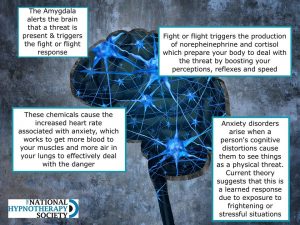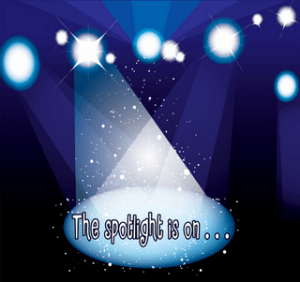Does giving something a label make it easier to accept?
I recently met with a lovely 12 year old who’s Mum had asked whether I would have a chat.
I asked what the problem was and was told,
“I have anxiety”
“Ok”, I said. “And how is having anxiety a problem for you?”
“Well, I find that I worry quite a lot”.
I then took time to explain what exactly anxiety is and how it can make us feel both mentally and physically. Within this explanation I stressed the point that not all anxiety is bad. In fact anxiety at an appropriate time is good. It could make the difference between us staying alive or not! But in most cases anxiety can help to improve focus and performance. The problem arrises when it becomes continuous, all consuming and exhausting.
We discussed the way that our brains look out for, and focus on potential threats to our well being. Once we have a “problem”, in this case the anxiety itself, it’s a little like putting “it” on the mantel piece in the room that you are in. You are then encourage to look at it, re check it constantly to make sure that it hasn’t changed and as a consequence of these actions we then magnify it. Before you know it, the problem has doubled in size and you now have illuminated it with spotlights. There is no way that you can ignore it now. And more importantly you can not move forward away from it.
So what to do?
“What if we labelled the problem “excitement”? Would it still be problem?” I asked.
“No”.
Interesting.
The word “anxiety” – noun (WORRY)
“an uncomfortable feeling of nervousness or worry about something that is happening or might happen in the future:
Children normally feel a lot of anxiety about their first day at school” – Cambridge Dictonary – IS a PROBLEM..
Yet
“excitement”-noun
“a feeling of being excited, or an exciting event:” – Cambridge Dictonary – Isn’t.
Why is this? When both emotions are produced by us looking towards the unknown future, and both warrant pretty much the same physical responses in the body and are created by the same part of our brain?
The main difference lies in how we choose to think about the situation at the time. Anxiety is linked with negative events in the future and excitement with positivity and fun. Let’s take the example given above in the Cambridge Dictonary:
“Children normally feel a lot of anxiety about there first day at school”
“Children normally feel a lot of excitement about their first day at school”
The relevant sentence will depend on each individual child and how they choose to think about their first day at school. This interpretation will of course be influenced by their learnings of life so far. Stories they have been told (social media and the internet) and the words and actions of loved ones surrounding the event. There is no right sentence but I know that I would prefer to be excited by an event rather then feel anxious. The difference between excitement and anxiety is whether you look forward to the challenge or you fear it. So by turning your anxiety into excitement, you can quickly remove the fear factor while still feeling the physical benefit. Because the fear has been removed you will then quite quickly feel in control and a state of calm will come about naturally.
Change the focus
In the case of my client we discussed how things would be different if she had “excitement’ on the mantel piece in place of anxiety. Not surprisingly, this was not a problem and it was decide that this is what would be done.
Now take a look at how you’re framing the situations that you are facing. Are you already certain that there’s going to be a negative outcome? Stop. Consciously focus on the potential positive outcomes of the situation. Let’s say, for example, you’re getting ready to take a test. You may be experiencing anxiety because you’re afraid you’re going to fail. Stop. Focus on the likelihood that you’re going to pass with flying colors. And if you need to, become playful with your thinking. You can create a positive outcome that is coloured with your imagination. Just make the picture a positive one.
How we choose to think about things really does have an effect on how we feel and consequently behave.
However. I know that It’s not always easy to change our negative thoughts and worries into positive ones. It can take time to re learn a new way of thinking. We can get stuck and find it hard to make the changes needed on our own. If you are struggling to move forward in the direction of your choice then please do get in touch and book your free initial consultation. Sometime the understanding on its own is enough. holly@hollystonehypnotherapy.co.uk







